Review: LG G7 ThinQ
May 7, 2018, 10:00 AM by Eric M. Zeman
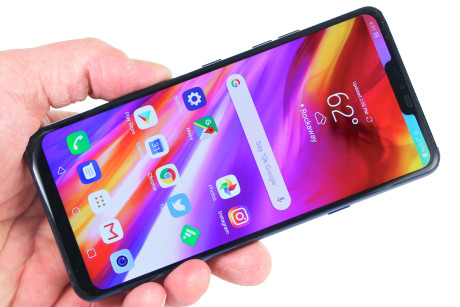
The G7 ThinQ is LG's latest Android flagship phone. It wraps a dual-camera system, top-of-the-line processor, and audiophile components in a metal-and-glass chassis that's sleek, modern, and waterproof. The G7 ThinQ is an alternative to today's Galaxies and iPhones. Find out if it is for you in Phone Scoop's in-depth review.
Hardware
Is It Your Type?
LG deserves your attention. It may not share the splashy cache enjoyed by Apple and Samsung, but the Korean company continues to make excellent phones. The G7 ThinQ is a metal-and-glass flagship that packs an incredible number of features into a super slim slate. If you're in the market for something a little bit different, the G7 ThinQ has unique features that make it worth your consideration.
Body
The G7 ThinQ marks the natural evolution of LG's design language. It takes the best elements of last year's G6 (slim profile, chamfered metal frame) and merges them with the best of the V30 (rounded design, high-quality glass). The result is a phone that's easy on the eyes, and easy to hold and use all day, every day. Even so, the phone loses something in process. While the G7 is a fine metal-and-glass entry, it somehow has less personality than its predecessors. Sometimes a little bit of personality goes a long way.
Face
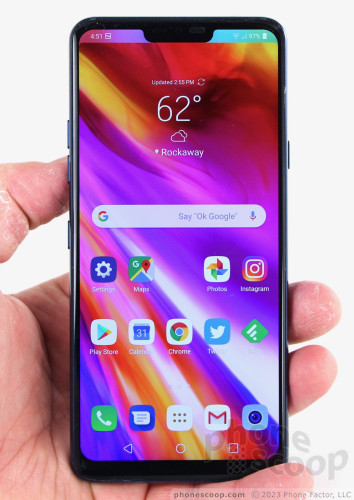
The G7 has the tall and narrow shape common to phones with 2:1 screens. It's an attractive hardware design, if not terribly unique. The smooth metal frame wraps around the middle and it's sandwiched between two sculpted pieces of Gorilla Glass 5. Antenna bands are visible on the top and bottom. The phone is conservative and restrained in its shape. The black and silver models don't do too much to stand out from the pack visually, but the blue and red models are stunning. The red has a dotted pattern below the rear glass that's totally unique.
LG's flagship is significantly taller than Apple and Samsung's flagships, but is about the same width. At more than 6 inches tall and just under 3 inches wide, the narrow appearance is exaggerated a bit. It's like the Wilt Chamberlain of phones. I found its size and shape to be comfortable. It's 8.2mm thick, which is slim. The phone's polished exterior makes it a bit slippery, and the profile ensures that it glides into pockets and other places effortlessly. It fit in my jeans and shorts pockets no problem.
Hand Fit
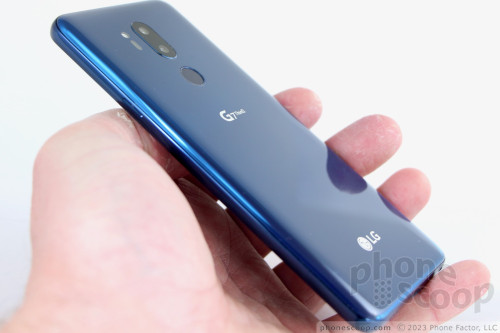
The quality is not in question and the assembly is as fine as any other phone in this class. LG selected solid materials. The metal frame is strong and the glass is … glass. I'm not 100% thrilled with what seems to be some kind of coating on the glass. It feels a bit more like plastic than glass. Comparatively, the glass of the Galaxy S9 and P20 Pro feels like actual glass. Still, all the pieces of the G7 are fitted together tightly and there are no uneven seams.
The phone is rated IP68 for protection against water and dust. It can handle up to 30 minutes in 1.5 meters of water. I tested it under faucets and in my sink. It came away unscathed. The G7 is not rugged and the glass may break if you drop the phone.
The phone's face is all glass and nearly all display. The screen measures 6.1 inches across the diagonal, and that includes the notched area. LG extended the aspect ratio from 18:9 (on the G6 and V30) to something a bit taller on the G7. The extra height accommodates the notch. The notch is smaller than the one on the iPhone X. It holds a small earpiece speaker, sensor array, and user-facing camera. There's also an LED indicator light tucked in there. There is a chin below the screen, but it's quite thin. There are no buttons, no controls, no fingerprint readers on the face. The G7's front really is almost all screen.
The G7 adds a screen lock button to the right side of the phone. I appreciate this. (It was part of the fingerprint reader on the G6 and V30.) LG says it made this change based on user feedback. The button is located high on the right edge, but it has a nice profile and works perfectly.
The individual volume buttons are on the left side of the phone. You'll see a third button on the left, too; it's a dedicated shortcut to the Google Assistant. Physically, these keys all work perfectly.
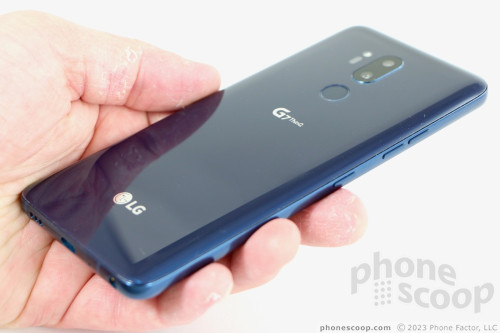
Some will surely groan about the Google Assistant key. Samsung has, since last year, included a dedicated Bixby button on its S series phones. On Samsung's phones the Bixby button can be disabled, but not remapped. On the G7, at least at launch, the Google Assistant button cannot be disabled nor remapped. It will remain a dedicated way to launch Google Assistant. It's faster to hold the button than to say "Hey Google". At least LG is going with the well-regarded Google Assistant and not its own software. Even better, LG has added some custom commands, such as "Take a low-light photo" and such. That's helpful, and LG hinted that something else related to Google Lens will be added soon.
The bottom edge of the G7 is pretty typical for a modern smartphone. The USB-C port is in the middle and it is flanked by a series of holes for the speakerphone and the 3.5mm headphone jack. I'm glad LG is sticking with the standard headphone jack. This sets it apart from devices from Apple and Google. Moreover, the jack has its own quad-DAC chip for super high-quality sound via wired headphones (or when plugged into a speaker, etc.)
Bottom Edge
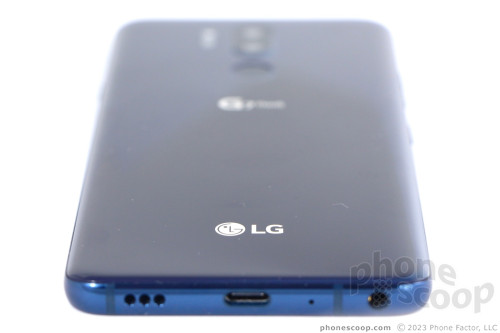
On the phone's top surface you'll find the SIM / memory card tray.
Other than the wicked blue color of our review unit, LG didn't do much to dress up the rear panel of the G7. It's a large piece of glass with slight curves near the outer edges where it meets the metal frame. LG did change up the camera and button configuration a bit when compared to the G6/V30. The dual camera module, perched fairly close to the top edge, is arranged vertically. The module has a minimal profile; it barely sticks out from the rest of the rear panel at all. (The iPhone X's camera module is a monstrosity in comparison.) The fingerprint reader is right where I like it to be. LG said the G7's fingerprint reader does not support extra shortcut features such as scrolling.
Camera and Fingerprint Reader
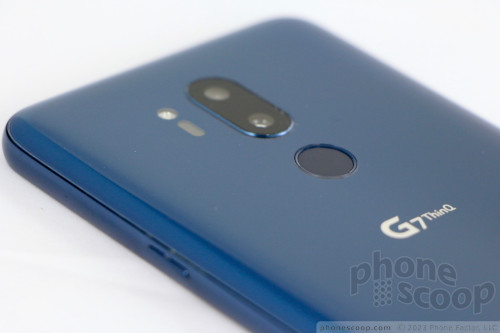
The LG G7 ThinQ is a fine piece of hardware. It's proof that LG can reach the same level of execution as its competitors and churn out a slim, attractive flagship phone. I just wish it had more of its own style.
Screen
The G7 has a 6.1-inch LCD display. The resolution is 3,120 pixels by 1,440 pixels (~2:1 ratio and quad-HD). Excluding the areas to either side of the notch, it measures 5.94 inches across the diagonal. The LCD has more than enough pixels to ensure everything looks sharp, clean, and free of jagged edges. The clarity of the display is quite impressive.
Brightness can be eye-popping. LG is using a Super Bright Display panel, which adds white pixels to the standard RGB mix, for added brightness and efficiency. LG goes so far as to claim the phone pushes out 1000 nits. We had a mixed experience. The pre-production units we initially saw were not bright at all, but our review unit (also a pre-production unit) is much better. I was easily able to see everything on the screen (outdoors, under the sun) with the brightness set to 50%, let alone 100%. I had no trouble using the phone outdoors to take pics of my kids' soccer games.
The screen supports HDR+ video playback, making it a cinematic powerhouse. Netflix is one of a few apps that support HDR+ on select phones. HDR+ produces even blacker blacks and brighter brights for the ultimate in contrast. The video I watched in HDR+ looked fantastic.
You can take full control over the notch, 'natch, thanks to some software from LG. LG calls this feature "new second screen." LG allows you to visually erase the notch by turning the pixels to either side black. Because the screen is an LCD (vs. OLED), the ears never fully disappear when in the hidden mode, but it's pretty close in most light. Uniquely, you can also customize the notch ear backgrounds separate from the wallpaper, and even control the rounding of the virtual screen corners.
Notch
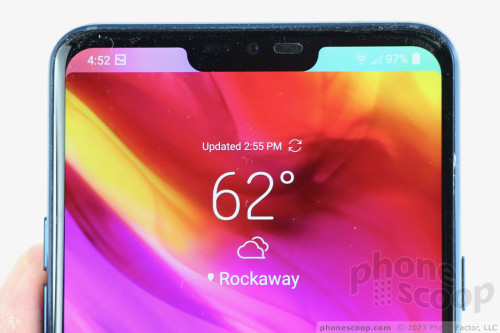
As is now common to high-end phones, you're able to adjust color tones of the whole screen, dial down the resolution, and more, to create the experience you want.
Signal
We tested an unlocked variant of the G7 on the networks of AT&T, T-Mobile, and Verizon. It easily found each network's LTE signals and offered solid 4G browsing speeds. I didn't run into any trouble with connectivity while testing the phone. T-Mobile showed the best performance on the device overall, even though our unit doesn't support band 71. (The version T-Mobile will sell does support band 71.)
In my time with the G7, I was able to make calls on the first dial across all three networks. The calls remained connected at highway speeds without issue. Downloading apps and uploading content over 4G was fine, as well. Streaming media over the network was the only inconsistent behavior I saw. Watching Netflix or listening to Spotify on the G7 was markedly better over T-Mobile and Verizon's networks than on AT&T's. (As it happens, AT&T is the only major U.S. carrier not selling the LG G7 ThinQ.)
Whether you buy an unlocked or carrier-branded version of the G7, I expect you'll have a good day-to-day experience on today's LTE 4G networks.
Sound
Call quality was very good across all three networks. The speaker produces loud voices and clean tones that are easy to hear in most places. You can set the earpiece to be quite loud, making it usable in outdoor and indoor spaces alike. Those I spoke to via the G7 said I sounded "fine."
I appreciated that I was able to set up WiFi Calling on both AT&T and T-Mobile. When I connected calls over WiFi to other AT&T or T-Mobile subscribers, there was a clear improvement in clarity and crispness. WiFi Calling didn't work on Verizon, though it's possible Verizon's branded variant will offer that service. WiFi Calling quality was great.
LG is calling the speaker on the bottom of the G7 a Boombox, which it claims is 39% louder than any other phone. LG is taking advantage of the phone's sealed interior to create a resonance chamber to help amplify sound. The result is an incredibly loud speaker that pushed a huge amount of air. The phone easily fills a small room with speakerphone calls or rich music. Calls sounded excellent via speaker, and music came across as well balanced and clean. I sampled some R&B, rock, pop, and jazz and it all sounded good.
Like other high-end LG phones, the G7 carries over a quad-DAC chip for high-end sound. The phone has dedicated circuitry for use with headphones or when plugged directly into a speaker or amplifier. There's no question this gives the phone a certain amount of appeal to audiophiles. The advanced controls for managing the EQ curve, the sound stage, and the R/L sound balance all work flawlessly. You'll get the best results when listening to lossless audio through high-end headphones. It sounds fantastic.
Battery
The G7 has a 3,000mAh battery, which feels a bit small to me. There's no question the G7 outlasts the Galaxy S9, which also has a 3,000mAh battery. I pushed the phone hard over several days of testing and found it reached the end of the day with about 20% power to spare. (I was sure to set the brightness to "auto" mode, I kept the screen resolution set all the way up, and ensured that all the radios were being put to use.) The phone does fine — it got me through the day — but it didn't impress me.
LG gave the G7 extra tools to help manage battery life. It has a normal mode, an extended mode, and a maximum mode. The latter two can be tweaked to control how severely they cramp down performance. The G7 also allows you to fine-tune how much power individual apps are allowed to use, such as running in the background.
The G7 supports Quick Charge 3.0 through its USB-C port. Thanks to the included fast charger, the G7 will power up quickly when needed. I found the battery often jumped up by 25% in just 15 minutes. It also supports both major wireless charging standards, which means it is compatible with most wireless charging pads. I tested it on a Qi-based pad and it worked fine. In fact, it charged up rapidly via the wireless Mophie Stream Pad+.
Bluetooth, GPS, NFC, WiFi
The phone has all the radios expected to appear in a modern phone, including FM (thanks NextRadio!).
The G7's Bluetooth radio did the trick. I paired it with a range of accessories, including headsets, speakers, and PCs. The phone maintained solid connections with each and reconnected easily when turned on. Music sounded excellent over stereo headphones, and voice calls sounded very, very good via my car's hands-free system.
The GPS radio worked flawlessly with Google Maps for search and navigation. It pinpointed me within seconds, to about 10 feet.
The NFC radio supports pairing with select Bluetooth accessories in addition to mobile payment services such as Google Pay. It worked as expected.
The WiFi performed flawlessly.
Software
Lock Screen
The G7 includes an Always On Display that shows the time, date, and battery life in faint white on the black screen. Incoming notifications — such as email, SMS, or Facebook — will cover up the clock for a split second before lining up next to the battery meter. This way you can always see what unread notifications await within. LG's version of this feature works well.
Lock Screen
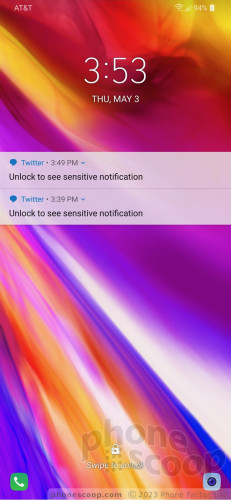
You can customize the lock screen to a small degree. For example, you can set which shortcuts appear at the bottom (up to 5), as well as where the clock appears on the screen. You can also adjust the swiping animations and opt to display the weather.
The G7 includes LG's KnockOn and KnockCode. Double-tap the display to wake the lock screen. This is most helpful when the phone is sitting on a table or desk. KnockCode is an optional security tool that unlocks the phone through a custom pattern of taps on the screen. I'm not sure it's necessary, given the G7's fingerprint sensor, but at least you have more than one way to wake the screen.
The G7's fingerprint reader is quick and reliable. It takes only a few moments to set up several fingerprints and I found the reader was consistently the fastest way to unlock the phone. Beyond unlocking the phone, the fingerprint reader can be used to secure individual photo galleries and QuickMemo files, but not apps or folders.
The G7 also includes facial recognition for unlocking the phone. The tool is somewhat easy to set up, though LG warns it is not as secure as a fingerprint. Using the software, you can record your face a single time, or multiple times to improve accuracy and security. Facial recognition does not work very well in low light, and doesn't function at all in the dark (unlike the iPhone X.)
Last but not least, the G7 allows you to unlock the phone with your voice. I didn't have a good experience with this. The training process is a serious pain; it took me over 10 minutes to get the system up and running. Moreover, it's slow, and didn't always work when I needed to unlock the phone. Stick with the fingerprint reader.
Home Screen
The G7 ships with Android 8 Oreo and a lot of software from LG.
LG offers three basic home screen experiences. Out of the box, the default home screen doesn't include the app drawer. This means all the apps are bundled together in folders on the home screens. You may add an app drawer by opting for the Home + App Drawer arrangement. You can also go for the super-simple EasyHome for an experience more attuned to the needs of beginners.
If you do choose to make use of the app drawer, you'll find you can arrange apps alphabetically, in folders, or pretty much however you wish.
The G7 supports all the typical customization and settings you expect to find on a flagship phone. You can switch up wallpapers; choose from various grid configurations (4x4, 4x5, 5x5); hide apps you know you won't use often; control behaviors such as fonts, font size, button arrangement, animations, and so on.
You can customize which toggles appear in the Quick Settings screen and swipe the toggles to see more.
The main settings tools are broken down into several tabs by default, but you can adjust it so they appear on a single screen. It's rather dense and not that easy to use. There's so much going on, in fact, that it took me several hours to go through all the settings to see what they do. There is a search function to help you find specific settings.
LG's Smart Bulletin is aboard, which becomes the left-most homescreen and provides quick access to certain data sets, such as LG Health, your calendar, and action items. The tool is inactive when you first boot the phone, but you can choose to turn it on if you wish. It's ok. It really didn't turn out any great recommendations over a few days' use, but it may need more time to learn.
The G7 ships with Qualcomm's Snapdragon 845 processor, the company's most advanced chip right now, with a reasonable 4 GB of RAM. I would have preferred to see 6 GB of RAM, but the G7 holds its own. The phone always felt light on its feet, despite the fact that our review unit is not running totally final software. I didn't run into any glitches or performance problems. It handled gaming, split-screen multitasking, and other processor-intensive tasks without breaking a sweat.
Floating Bar
he Floating Bar is optional. It supports up to four different sets of controls: shortcuts, screen capture tools, music player, and contacts.
Floating Bar
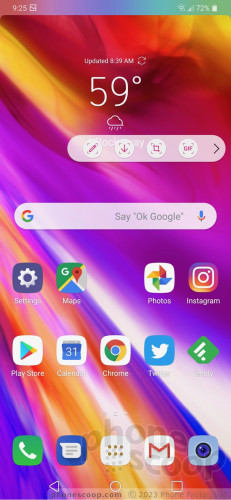
When activated, the Floating Bar is accessible from either the right edge of the left edge of the G7. It appears as a small arrow in a half circle along the screen's border. I like that it comes and goes whenever you want. The Floating Bar reminds me a bit of Samsung's Edge Screen tool on Galaxy handsets. You can customize the bar to a degree, such as choosing the app shortcuts and top five contacts. I like it, but I'm not sure it is any quicker to use than the standard home screen shortcuts.
Camera
The G7 doesn't have a physical camera button, but you can launch the camera from the lock screen or with a quick double press of the volume-down button. It opens swiftly.
The main viewfinder is fairly typical. It's easy to access the flash (on, off, auto), switch to the front camera, open filters, select shooting mode, or jump into the settings. Buttons at the top let you quickly switch between the main lens and the wide-angle lens. HDR is buried in the settings menu, but you can set it to "auto".
I like that you can drag the shutter button up and down to zoom. Further, thanks to the dedicated video capture button, it's easy to start taking video and then snap photos while shooting video.
LG has really pared back the camera shooting modes. The main thrust of the software is the AI Cam. Thanks to the scene recognition powers of the Snapdragon 845 and Spectra Image Signal Processor, the AI Cam is able to discern between 18 different scenes. These let the camera know when you're taking a close-up, or a shot at the beach, or a sunset photo. The software matches the recognized scene with camera presets in order to take the best possible picture for that scene.
The AI Cam was able to recognize fruit, beverages, and more. You'll see text keywords float on the screen as it tries to determine what it's looking at. You can take your picture whenever you want; you don't have to wait for the AI Cam to do its thing. This is the default shooting mode and it works well enough.
AI Cam
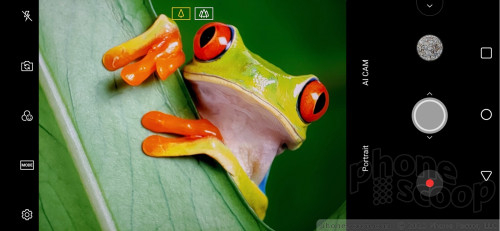
The only other shooting mode directly accessible from the main viewfinder is the portrait mode. Here, the camera puts the two rear lenses to work to create photos with bokeh (blurred backgrounds). To access the other shooting modes, you need to hit the "mode" button to bring up a mode menu. The options include manual, manual video, cine video, food, slow-motion, panorama, and GIF-maker.
Manual mode is for knowledgeable users who want to be creative. As the name implies, you have full control over everything: white balance, focus, brightness, ISO, and shutter speed. Shutter speed can be set as long as 30 seconds, (for dramatic and/or creative night shots.) You can also set the auto-exposure to lock. Each option has its own slider that lets you adjust on the fly. As you do this, the screen changes to provide a preview of how the resulting image might look. You can opt to capture in RAW when using manual mode.
You can take advantage of the Graphy manual-presets when using the manual mode. These allow you to manually select scenes — cafe, city street, sunset, people, scenery — in order to help guide you with the manual settings.
Manual mode for video is essentially the same thing. It includes all the white balance, focus, and brightness tools of the manual picture mode and adds several hi-fi audio controls, as well as mastery over frame rate, and bit rate.
Cine video gives you 15 Hollywood-style filters for capturing video. Each filter has a distinct look and feel, helping videos stand out. For example, Noir is very 1930s detective-y, while scenery is better for landscapes, and summer blockbuster is great for outdoor action. You can adjust the strength of the effects. You can add the video filters at will while capturing video, and mix and match styles when editing the results later.
The phone automatically activates Super Bright Mode when needed. When it senses low-light scenes (3-10 Lux) it will suggest you turn on Super Bright Mode. When it senses really dark scenes (2 Lux or less) it will automatically turn on Super Bright Mode. This mode uses pixel binning to turn four individual pixels into one larger pixel, to capture more light with less noise. The results definitely show more detail in the dark.
There's no timelapse mode, no animoji / AR emoji, and no super-slow-motion video.
The selfie camera includes its own portrait mode (using a single lens), its own filters, and its own set of stickers for dressing up selfies.
The learning curve for the G7's camera isn't too bad. It's easier to use than the camera app on the Galaxy S9, but only just. The iPhone's camera is still the easiest. The AI Cam means you don't have to think as much to get good shots.
Photos/Video
The G7 has two cameras on the back. Both capture 16-megapixel images. The main camera has a 71-degree field of view and an aperture of f/1.6, while the secondary camera has a 107-degree field of view and an aperture of f/1.9. (By way of comparison, the wide-angle lenses of the G6 and V30 shot at 120 degrees.) LG said it reduced the angle a bit to reduce optical distortion. This means you can fit a bit less in the frame, but it won't be as distorted around the edges.
Image quality ranged from just okay to staggering. Most of the shots I took showed sharp focus, accurate white balance, and proper exposure. The lack of grain in the shot of my clock demonstrates how good the Super Bright Mode can be. (Nearly all phones I've tested have struggled to do a good job with that clock.) The green soccer field is 100% accurate to what my eyes saw, but the green shrub in front of my house shows boosted greens a bit. The tomatoes look great, as do the tiny drink umbrellas. The most impressive shot of the bunch is the purple flowers. The color and clarity is fantastic.
If you want an idea of how the normal angle and wide-angle shots compare, check these out. You can see that the wide-angle shots don't show any optical distortion at all and the exposures / white balance is about even.
The portrait modes produce results that are as clean and freakish as those of competing phones. I saw some good portraits where the line between focus and blur was subtle, and others where the software lopped off part of my head and blurred out my hair. This software has a ways to go yet. The main camera produced better portraits than the selfie camera, that's for sure.
The video camera does a fine job. It captures video up to 4K. The results were sharp, colorful, and spot-on with respect to exposure. I was pleased with the quality of the audio that accompanied my videos. The software did a great job dialing down background noise and capturing the sound I wanted in several instances. The stereo effect is quite good.
The LG G7 has a fine camera. I think the Pixel 2 XL, Galaxy S9+, and P20 Pro are slightly better, but this phone is absolutely in the same ballpark with its competitors.
Google Assistant
The dedicated Google Assistant function works, but suffers from the same limitation of other such shortcuts.
The shortcut button itself is perfect. Press the dedicated hardware button on the left edge and talk to Google. It works great when your phone is already unlocked.
Have a locked phone? Then it's a different story. You won't be able to ask Google Assistant for help until you've unlocked your phone. I ran into the same issue on the Pixel 2 XL with its side-squeezing shortcut.
The same goes for the voice-activated version of Google Assistant. LG improved its microphones and claims that the G7 is 39% better at hearing owners' voice commands than competing devices. This particular improvement pertains to distance, meaning the G7 can pick out your voice better than anything else within a 6.6-foot radius.
Sadly, this doesn't do any good when the phone is locked, as it would be in many situations. Sure, it hears me, but it wants me to enter my password before it will do anything. This is useless if my hands are full, or I'm across the room, and so on.
The Assistant itself works perfectly fine. LG created its own custom voice commands for the G7, such as "take a low-light photo."
Wrap-Up
LG did a great job with the G7, but I'm not sure it did enough to stave off the Galaxies and iPhones that compete with it.
The hardware is simple and straightforward in a modernist way that I appreciate. It ticks off all today's checkboxes: metal-and-glass materials, waterproof, USB-C, headphone jack, memory card support, slim design, wireless charging, and more. The screen is gorgeous, voice and data performance are very good, battery life does well enough, and extras like Bluetooth and NFC do their jobs well.
LG's software is almost as overbearing as that of Samsung. I'm glad the phone ships with Android 8 Oreo, and there's no doubt LG gives you plenty of opportunities to make the G7 your own.
The camera software is a bit simpler to use at the expense of features. LG dropped a lot of shooting modes in order to focus on it AI Cam, which feels a little undercooked. The G7 takes excellent images that are nearly as good as LG's main competitors.
Who should buy this phone? Well, critically, we don't know yet how much it costs. LG and its carrier partners haven't announced pricing details ahead of the phone's June 1 launch. Without that information, we can only say it competes well on a feature and performance level with the Galaxy S9 and iPhone X, even if it falls a little short.

Comments
No messages


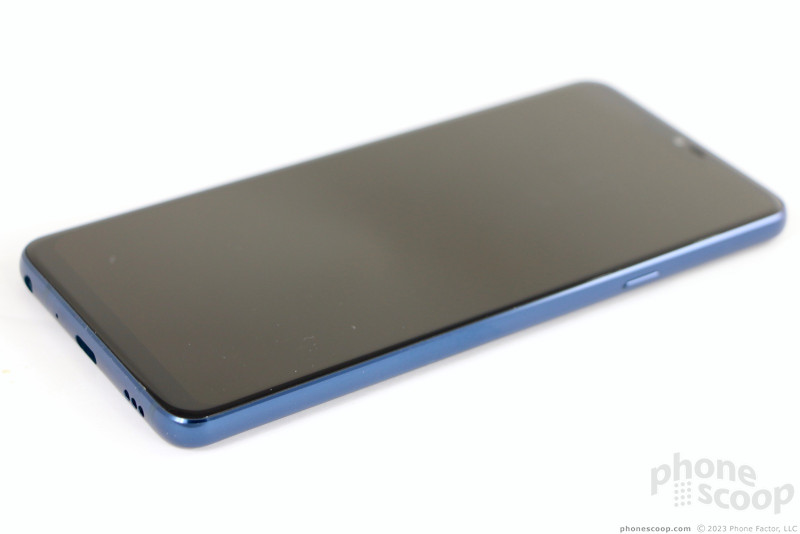




















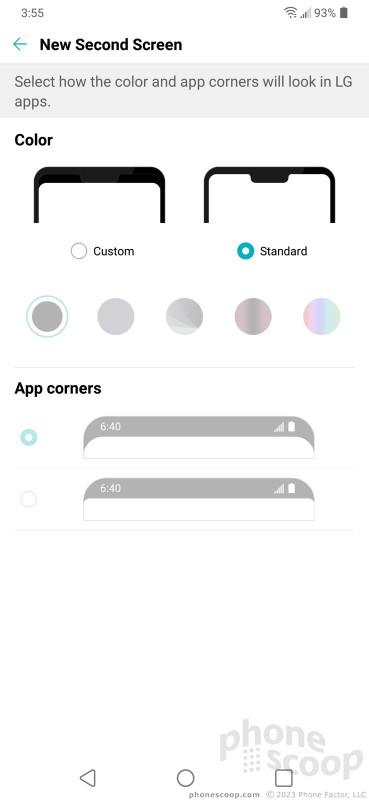







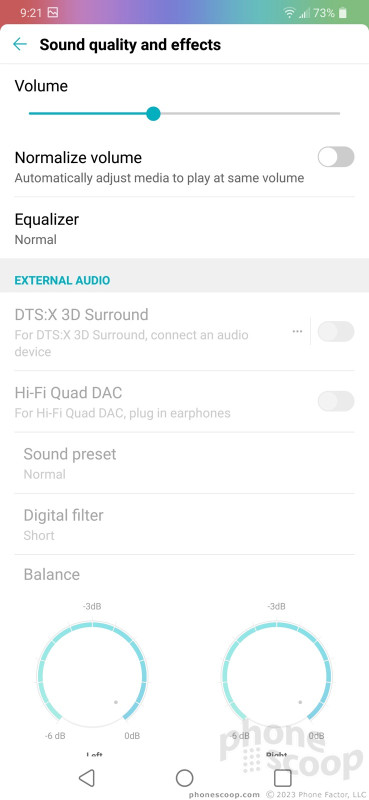




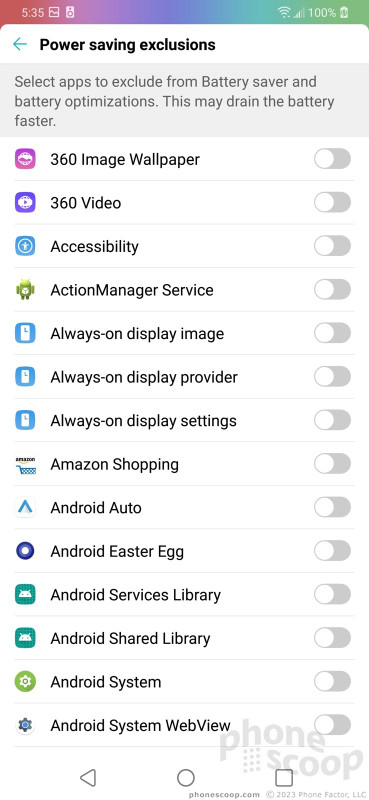




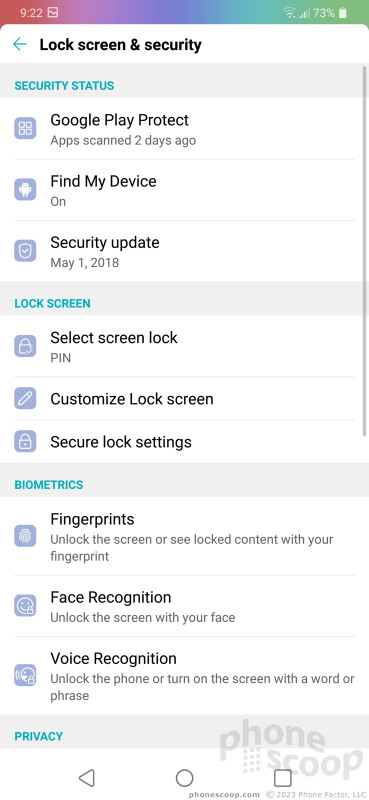






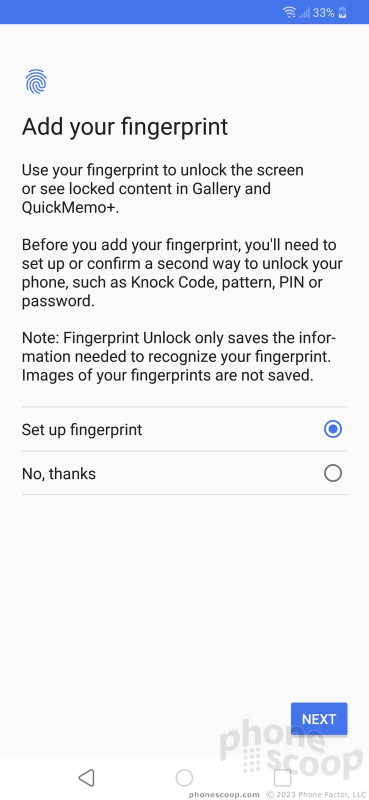









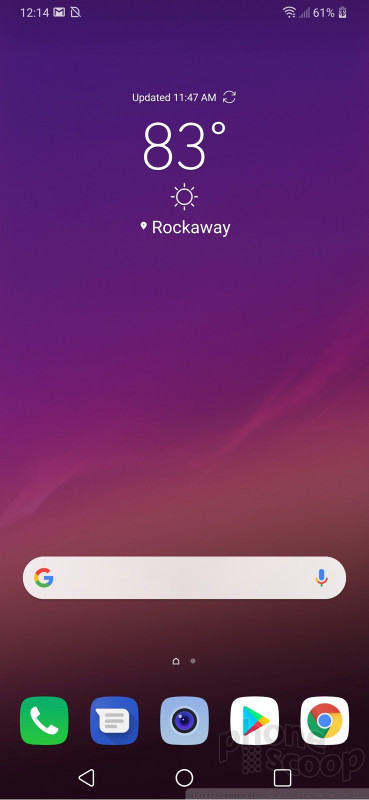





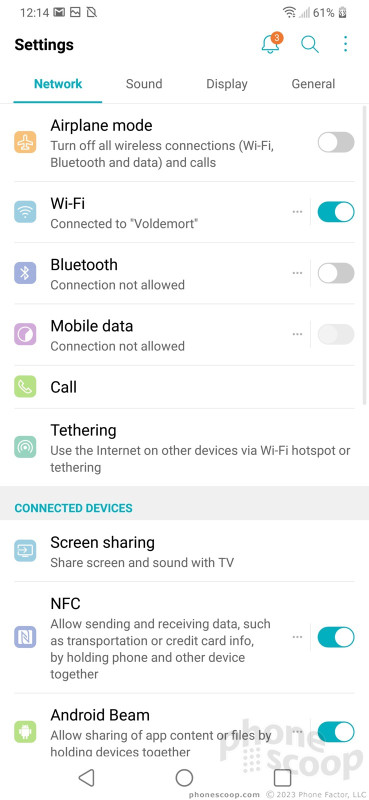







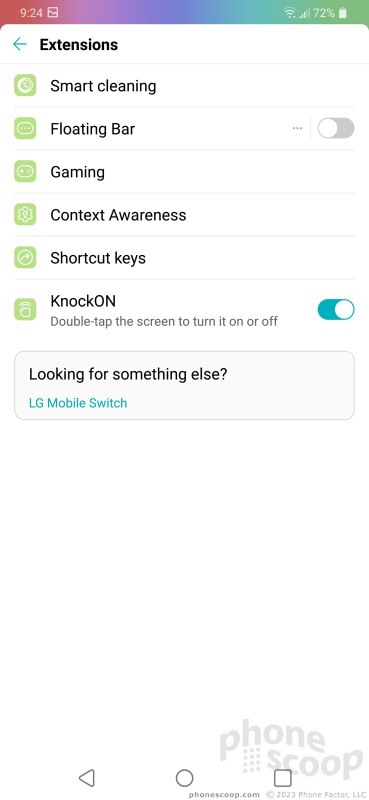






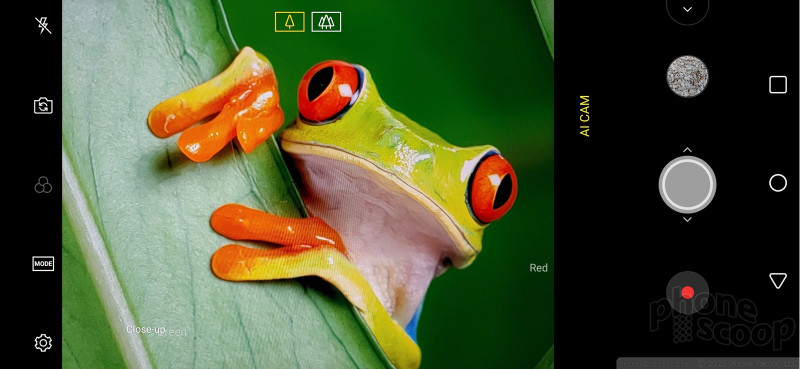





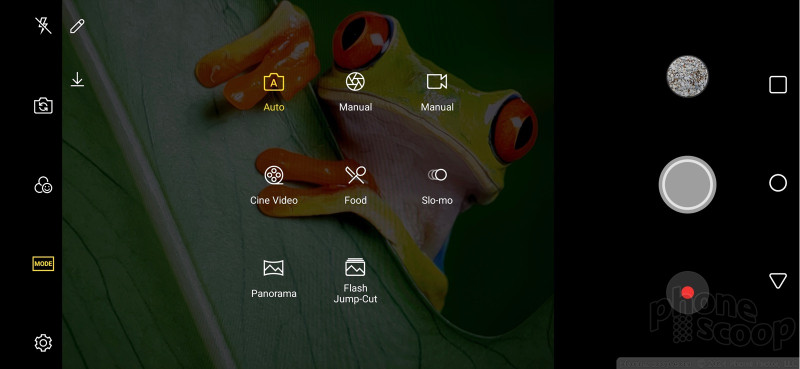





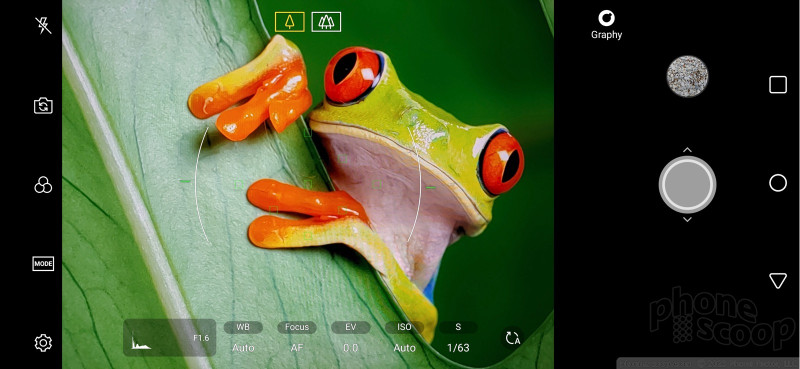








































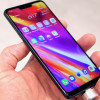 Hands On with the LG G7 Fit and G7 One
Hands On with the LG G7 Fit and G7 One
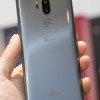 Hands On with the LG G7 ThinQ
Hands On with the LG G7 ThinQ
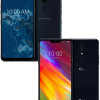 LG Adds Two More Affordable Devices to the G7 Series
LG Adds Two More Affordable Devices to the G7 Series
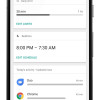 Project Fi Gains Support for Kids Under Age 13 via Family Link
Project Fi Gains Support for Kids Under Age 13 via Family Link
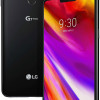 LG G7 ThinQ Goes On Sale Today for $749
LG G7 ThinQ Goes On Sale Today for $749
 LG G7 ThinQ
LG G7 ThinQ










